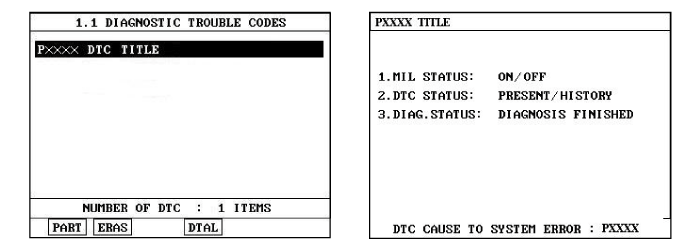Check DTC Status
Connect scantool to Data Link Connector(DLC).
IG "ON".
Select "Diagnostic Trouble Codes(DTCs)" mode, and then Press F4(DTAL) to check DTC's information from the DTCs menu
Read "DTC Status" parameter.

Is parameter displayed "Present fault"?

▶ Go to "Component Inspection" procedure.

▶ Fault is intermittent, go to "Verification of vehicle Repair" procedure.


